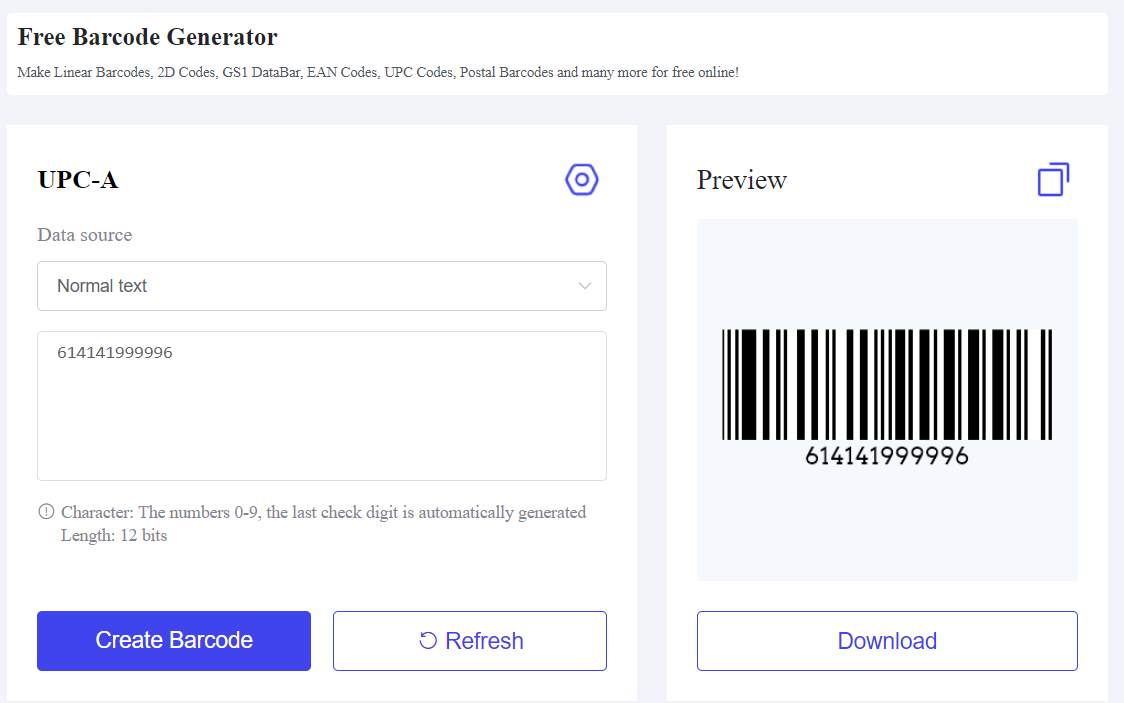Understanding how to read a barcode is crucial for leveraging this technology's full potential.
This article will provide you with a thorough guide on interpreting barcodes, reading barcode numbers, and effectively using barcode readers.
By the end, you'll be well-equipped to apply this knowledge practically, whether for personal or business purposes.
Understanding Barcodes
A barcode is a machine-readable representation of information, designed as a series of parallel lines (bars) and spaces of varying widths. Barcodes can be categorized into several types:
● 1D Barcodes: Also known as linear barcodes, these include formats like UPC and EAN codes, which are commonly used in retail.
● 2D Barcodes: These include QR codes and Data Matrix codes, which can store more data than 1D barcodes and are used in various applications, from marketing to logistics.
● QR Codes: A subset of 2D barcodes, QR codes are widely used for quick access to digital content such as websites, app downloads, and contact information.
Importance of Barcodes
Barcodes play a pivotal role in streamlining operations across different sectors by:
● Enhancing Accuracy: Minimizing human error in data entry and record-keeping.
● Increasing Speed: Allowing for rapid scanning and processing of information.
● Boosting Efficiency: Improving tracking and inventory management, leading to cost savings and better resource allocation.
Basics of Barcode Structure
The structure of a barcode consists of:
● Bars: The black lines that encode the data.
● Spaces: The white gaps between the bars that also carry information.
● Numbers: Typically found below the bars, these help with manual verification and error checking.
The arrangement and width of the bars and spaces follow specific barcode symbology, which defines how the data is encoded and read by scanners.
How to Read Barcode Numbers?
To effectively understand how to read barcode numbers, let’s break down a typical UPC barcode example:

● Country Code: The first 1-3 digits represent the country where the manufacturer is registered.
● Manufacturer Code: The next set of digits identifies the product's manufacturer.
● Product Code: Unique to each product, these digits differentiate items produced by the same manufacturer.
● Check Digit: The final digit, calculated based on the other digits, ensures the barcode is correctly read and verifies the integrity of the data.
Tools for Reading Barcodes
1. Barcode Readers and Scanners
Various types of barcode readers are available, each suited for different applications:
● Laser Scanners: Use a laser beam to read barcodes, commonly found in retail environments.
● CCD Readers: Utilize an array of light sensors to capture the barcode image.
● 2D Imagers: Capture a digital image of the barcode and decode it, suitable for reading both 1D and 2D barcodes.
To use a barcode reader effectively, ensure the scanner is aligned with the barcode and within the optimal distance specified for the scanner type.
2. Smartphone Barcode Scanners
Modern smartphones are equipped with cameras and apps that can function as barcode scanners. To learn how to read the barcode with an iPhone, follow these steps:
● Download a barcode scanning app from the App Store.
● Open the app and position the barcode within the camera viewfinder.
● The app will automatically scan and decode the barcode, displaying the encoded information.
Practical Steps to Read a Barcode
1. Manual Reading
Reading barcodes manually involves understanding the symbology and decoding the numbers by interpreting the widths of the bars and spaces.
This method is particularly useful for verifying barcode data without the use of a scanner.
2. Using a Barcode Reader
How to use barcode readers?
● Aim the scanner at the barcode.
● Ensure the reader is at the correct distance from the barcode.
● Press the trigger button to initiate the scan.
For efficient scanning, ensure the barcode is clean, undamaged, and adequately lit. Common issues include misalignment, poor lighting, and reflective surfaces.
Applications of Barcode Reading
1. Retail and Inventory Management
Barcodes significantly enhance retail and inventory management by:
● Speeding up checkout processes and reducing queue times.
● Accurately tracking inventory levels, reducing the risk of overstocking or stockouts.
● Simplifying audits and stocktakes, ensuring data accuracy and reliability.
Examples include Point of Sale (POS) systems and sophisticated warehouse management systems (WMS) that use barcodes for real-time inventory tracking.
2. Personal and Business Use
Individuals and businesses alike benefit from barcode technology in various ways:
● Personal Use: Organizing home libraries, tracking personal collections, and managing household inventories.
● Business Use: Small businesses can use barcodes to manage inventory, streamline operations, and improve accuracy in order fulfillment.
Case studies demonstrate that businesses implementing barcode systems experience significant improvements in operational efficiency and data accuracy.
FAQs
1. How do I manually read a barcode?
To manually read a barcode, familiarize yourself with the barcode symbology and decode the numbers based on their position and significance in the sequence.
2. What do the numbers mean on a barcode?
The numbers on a barcode typically include a country code, manufacturer code, product code, and a check digit. Each segment has a specific role in identifying and verifying the product information.
Summarizing, gaining a solid understanding of how to read a barcode is invaluable for optimizing the benefits of barcode technology across various applications.
Whether for personal use or business purposes, barcodes enhance accuracy, efficiency, and speed.
To explore further and create custom barcodes, visit our free barcode generator.




